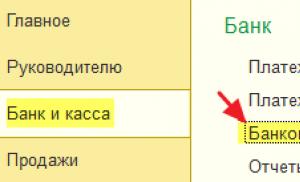Transformers presentation. Electrical engineering
A transformer is a static electromagnetic device that converts alternating voltage at a constant frequency. Classification of transformers:
By number of phases: single-phase and three-phase
By type of magnetic circuit: rod, armored,
toroidal
By purpose: power (supply),
measuring (expand the limits of measurement
devices) and special (for example welding)
According to the output voltage: step-down
and increasing
Types of single-phase transformers
a) – core transformer (windingsseparated into two rods)
b) – armored transformer (windings
wound one on top of the other, winding
the highest voltage is on the winding
low voltage)
Single-phase transformer device
The closed magnetic circuit (laminated) is made up ofsheets of electrical steel 0.35-0.5 mm thick,
insulated with varnish (to reduce losses on
eddy currents). The upper part of the magnetic circuit is a yoke, there
where the windings are worn - the rod.
Windings of copper wire are located on rods,
isolated from them. The primary winding is powered from
network, and the load is connected to the secondary one.
The operating principle of a single-phase transformer is based on the phenomenon of mutual induction and the law of electromagnetic induction
When connecting the primarytransformer windings into the network
AC flows through the winding
the current that creates in
variable magnetic circuit
magnetic flux F, it
closes, piercing the turns
secondary winding, and induces there
according to the law of electromagnetic
induction of emf. This EMF and
used to power the load.
Voltage conversion
achieved through various
number of turns of windings.
The transformation ratio shows how many times the alternating voltage changes
Ê òðU1 W1 I 2
U 2 W2 I1
E1 4.44 f W1 Ô
E2 4.44 f W2 Ô
Transformer EMF formula:
W – number of turns
Ф – magnetic flux (Wb)
f - AC frequency (Hz)
No-load mode - the rated voltage is applied to the primary winding, a minimum current flows in it, and the secondary
the winding is open.*
*
W
~U1
~U2
Wattmeter included
into the primary circuit
windings will be measured
idle losses
the moves that are coming
for magnetization reversal
iron (MAGNETIC
LOSSES)
Short circuit mode - 5-10% of the rated voltage is supplied to the primary winding, and the secondary winding is closed, in it
maximum current flows.*
~5-10% U1
*W
Wattmeter included
into the primary circuit
windings will be measured
loss of short
closures that
go for heating
winding conductors
(ELECTRICAL
LOSSES)
Transformer efficiency
P2100
P1
P1 = U I
– power consumed from the network
P2 = P1 - (Rel+Rm)
– useful power,
given to the load
Rel+Rm
power
– electrical and magnetic losses
Three-phase transformers
Power transmission lines use powerful three-phase power transformers.
Magnetic corehas three
rod, on
everyone
located by
two windings
each phase
concentrically.
Schematic diagram of a three-phase transformer 1 – magnetic circuit 2 – primary winding 3 – secondary winding
Three-phase power transformer
1 – switch (changestransformation ratio by
5%)
2- winding terminal insulators
high voltage
3 – low winding insulators
voltage
4 – oil indicator
5 – expansion tank
6 – heat exchange pipes
7 – tank with transformer
oil
8 - magnetic core
9 – low winding
voltage
10 – higher winding
voltage
To connect the transformer to the power line, there are terminals on the tank lid - porcelain insulators with copper rods.
A B C – high voltage terminalsand in c – low voltage terminals
O – neutral wire terminal
The transformation ratio of a three-phase transformer depends on the method of connecting the windings and can vary by 1.7 times
a) Ktr = Ul1/Ul2= Uph1/ Uph2b) Ktr =Ul1/Ul2= 1.7·Uf1/Uf2
IN)
Ktr =Ul1/Ul2= Uf1 / 1.7·Uf2
Special transformers
An autotransformer is a transformer, part of the primary winding of which belongs to the secondary, so it can smoothly
change the transformation ratio, i.e. output voltagevaries.
1 – regulator
2 – slider (moves
by winding turns)
3 – toroidal
magnetic circuit with
copper coil wound on it
winding
Operating principle of an autotransformer
Runner movingalong the turns of the primary
windings, separates them
part for secondary,
giving off voltage to
load, the more
turns, the more
voltage on
load.
An AC regulator is used
voltage (LATR) for
launch asynchronous
cars
Instrument transformers - expand the measurement limits of AC devices due to the difference in the number of turns
primary and secondarywindings
Measuring
transformer
current works in
short mode
closures, through
it is possible
turn on
ammeter and
current coil
wattmeter. Measuring
transformer
voltage
works in mode
idle move,
through it you can
turn on
voltmeter,
hertzmeter and
voltmeter
wattmeter coil.
A welding transformer is used to produce the electric arc used for welding.
The transformer should easily switch from modeidle to short circuit mode. For
this increases the flow of dissipation so that
obtain a falling external characteristic.
Welding transformer type TSK with sliding windings
3 – steelcore
4 – handle for
extensions
windings
5i6–
sliding
windings
Welding transformers type STN – with choke coils, which increase the dissipation flux, serve for regulation
welding current.1 – transformer
2 – regulator
3 – welding
electrode
4 - plate
Transformers
The presentation was prepared by Nelli Sulimenko (11th grade)
Transformer - a static electromagnetic device having two or more inductively coupled windings and designed to convert, by electromagnetic induction, one or more alternating current systems into one or more other alternating current systems.
- Transformer - a static electromagnetic device having two or more inductively coupled windings and designed to convert, by electromagnetic induction, one or more alternating current systems into one or more other alternating current systems.
What is a transformer?
November 30, 1876, the date of receipt of the patent by Pavel Nikolaevich Yablochkov, is considered the date of birth of the first alternating current transformer. It was a transformer with an open core, which was a rod on which windings were wound.
- November 30, 1876, the date of receipt of the patent by Pavel Nikolaevich Yablochkov, is considered the date of birth of the first alternating current transformer. It was a transformer with an open core, which was a rod on which windings were wound.
- The first closed-core transformers were created in England in 1884 by brothers John and Edward Hopkinson.
Transformer history
Pavel Nikolaevich Yablochkov (September 14, 1847, Serdobsky district, Saratov province - March 19, 1894, Saratov) - Russian electrical engineer, military engineer, inventor and entrepreneur. He is known for the development of the arc lamp (which went down in history under the name “Yablochkov candle”) and other inventions in the field of electrical engineering.
- Pavel Nikolaevich Yablochkov (September 14, 1847, Serdobsky district, Saratov province - March 19, 1894, Saratov) - Russian electrical engineer, military engineer, inventor and entrepreneur. He is known for the development of the arc lamp (which went down in history under the name “Yablochkov candle”) and other inventions in the field of electrical engineering.
Pavel Nikolaevich Yablochkov.
Transformers play a large role in providing electricity and using it in almost any unit that operates from the mains. They are also used for diagnostic and industrial purposes.
- Transformers play a large role in providing electricity and using it in almost any unit that operates from the mains. They are also used for diagnostic and industrial purposes.
- They carry out alternating voltage conversion and/or galvanic isolation in a wide variety of applications - electrical power, electronics and radio engineering.
Purpose.
A power transformer designed to convert electrical energy in electrical networks and in installations designed to receive and use electrical energy. The word “power” reflects the operation of this type of transformer with high power.
- A power transformer designed to convert electrical energy in electrical networks and in installations intended for receiving and using electrical energy. The word “power” reflects the operation of this type of transformer with high power.
Types of transformers
An autotransformer is a variant of a transformer in which the primary and secondary windings are connected directly, and due to this they have not only an electromagnetic connection, but also an electrical one.
- An autotransformer is a variant of a transformer in which the primary and secondary windings are connected directly, and due to this they have not only an electromagnetic connection, but also an electrical one.
Types of transformers
Current transformer is a transformer whose primary winding is powered by a current source. Typical applications are to reduce the primary current to a convenient value for use in measurement, protection, control and signaling circuits.
- Current transformer is a transformer whose primary winding is powered by a current source. Typical applications are to reduce the primary current to a convenient value for use in measurement, protection, control and signaling circuits.
Types of transformers
Voltage transformer - a transformer powered by a voltage source. A typical application is the conversion of high voltage to low voltage in circuits, in measuring circuits.
- Voltage transformer - a transformer powered by a voltage source. A typical application is the conversion of high voltage to low voltage in circuits, in measuring circuits.
Types of transformers
A pulse transformer is a transformer designed to convert pulse signals with a pulse duration of up to tens of microseconds with minimal distortion of the pulse shape.
- A pulse transformer is a transformer designed to convert pulse signals with a pulse duration of up to tens of microseconds with minimal distortion of the pulse shape.
Types of transformers
An isolation transformer is a transformer whose primary winding is not electrically connected to the secondary windings.
- An isolation transformer is a transformer whose primary winding is not electrically connected to the secondary windings.
Types of transformers
A matching transformer is a transformer used to match the resistance of various parts (cascades) of electronic circuits with minimal distortion of the signal shape.
- A matching transformer is a transformer used to match the resistance of various parts (cascades) of electronic circuits with minimal distortion of the signal shape.
Types of transformers
A peak transformer is a transformer that converts a sinusoidal voltage into a pulse voltage with a polarity changing every half cycle.
- A peak transformer is a transformer that converts a sinusoidal voltage into a pulse voltage with a polarity changing every half cycle.
Types of transformers
A dual inductor is a transformer with two identical windings. Thanks to the mutual induction of the coils, it is more efficient than a conventional inductor with the same dimensions.
- A dual inductor is a transformer with two identical windings. Thanks to the mutual induction of the coils, it is more efficient than a conventional inductor with the same dimensions.
Types of transformers
A transfluxor is a type of transformer used to store information. The main difference from a conventional transformer is the large amount of residual magnetization of the magnetic circuit.
- A transfluxor is a type of transformer used to store information. The main difference from a conventional transformer is the large amount of residual magnetization of the magnetic circuit.
Types of transformers
Rotating transformer - Consists of two halves of a magnetic circuit, each with its own winding, one of which rotates relative to the other with a minimum gap.
- Rotating transformer - Consists of two halves of a magnetic circuit, each with its own winding, one of which rotates relative to the other with a minimum gap.
Types of transformers
Thank you for your attention!!!
What is a transformer? WHAT IS A TRANSFORMER?
A transformer is a very simple device that
allows you to both increase and decrease the voltage, and
convert alternating current.
Transformers were first used in 1878.
Russian scientist P. N. Yablochkov for nutrition
“electric candles” he invented
Device
DEVICEThe transformer consists of a closed iron core, on
which is put on two (sometimes more) coils of wire
windings. One of the windings, called the primary,
connects to an AC voltage source. Second
winding to which the “load” is connected, i.e. devices and
devices that consume electricity are called
secondary. Diagram of a transformer with two windings
shown in the figure.
Diagram and devicesAbout
SCHEME AND DEVICEOperating principle
OPERATING PRINCIPLEThe action of the transformer is based on the phenomenon of electromagnetic
induction. When alternating current passes through the primary winding
an alternating magnetic flux appears in the iron core,
which excites the electromotive force of induction in each
winding This means that by boosting with a transformer
tension several times, we reduce the force by the same amount
current, and vice versa.
Types of transformers
TYPES OF TRANSFORMERSPower transformer
- transformer,
designed to convert electrical
energy in electrical networks and installations,
intended for reception and use
electrical energy. Autotransformer - option
transformer in which the primary and
the secondary windings are connected directly, and
due to this they have not only
electromagnetic communication, but also electrical.
The winding of the autotransformer has
several pins (at least 3),
by connecting to which you can receive
different voltages. The disadvantage is
lack of electrical insulation
(galvanic isolation) between the primary
and a secondary circuit. Advantage
autotransformer - higher efficiency,
lower consumption of steel for the core, copper Current transformer - a transformer that is powered by
from the current source. Typical application is for
reducing the primary current to a value
used in measurement, protection,
control and alarm. Nominal value
secondary winding current 1A, 5A. Primary winding
current transformer is connected to the circuit with
measured alternating current, and in the secondary
measuring instruments are turned on. Current,
flowing through the secondary winding of a transformer
current is equal to the primary winding current divided by
transformation ratio. Voltage transformer - transformer,
powered by a voltage source. Typical
application - high voltage conversion
in low in chains. Transformer Application
voltage allows you to isolate logic
protection circuits and measurement circuits from the high circuit
voltage. A pulse transformer is a transformer
designed for converting pulse
signals with pulse durations up to tens
microseconds with minimal shape distortion
impulse. Main application - transmission
rectangular electrical pulse. He serves
to transform short-term
video voltage pulses, usually periodically
repeating with high duty cycle. An isolation transformer is
transformer whose primary winding
not electrically connected to secondary
windings.
Power
dividing
transformers
intended
For
increasing the safety of electrical networks, with
random simultaneous touches to the ground
and live or non-current carrying parts
in parts,
which
can
turn out to be
under
voltage in case of insulation failure.
Signal isolation transformers
provide
galvanic
denouement
electrical circuits.



Short circuit mode Since the current I 2k in the secondary winding is large, even at a low input voltage U 1k the current in the primary winding I 1k reaches large values. This can lead to overheating or even burnout of one of the transformer windings.


Load mode The current of the secondary winding I 2 has a significant effect on the current in the primary winding I 1. This is due to the counter-connection of the windings, in which the total magnetic flux in the primary winding is equal to the difference in the magnetic fluxes created in it by the currents of the primary and secondary windings: magnetic flux from current I 2 reduces the total magnetic flux through the primary winding, and therefore, reduces the total EMF induced in it, which leads to an increase in the current I 1 in it to a value at which its total EMF, together with the voltage drop across the active resistance, and, will balance the voltage U 1 applied to the primary winding.





Features of autotransformers The current in the common part of the autotransformer winding is less than in the rest of it, since almost counter currents of the primary and secondary circuits flow through the common part of the winding. The power of the primary circuit is transferred to the secondary circuit by both electromagnetic (transformer) and electrical methods.

Advantages of autotransformers: efficiency; winding materials are consumed only on one winding; lower losses in copper and higher efficiency - currents in the common part are directed in the opposite direction; the possibility of smoothly adjusting the voltage U 2 of the secondary circuit with continuous sliding of the contact along the cleaned surface of the turns.





Design of transformers The design of a transformer depends on its purpose and scope of application. However, almost all transformers have the same main structural elements - the magnetic system and windings. The most widely used are power transformers, which serve to transmit electrical energy and distribute it between consumers.

Current density in windings Current density in windings is selected according to heating conditions within the range of (1-2.5) 10 6 A/m 2 in dry and (2-4.5) 10 6 A/m 2 in oil, depending on power and design of the transformer. According to the technology conditions, the maximum cross-section of a round conductor is selected to be approximately 20 mm 2, and a rectangular conductor is 80 mm 2. The maximum current of one conductor is 45 and 360 A, respectively.

Winding elements The main element of the winding is a turn, which is made by one or a group of parallel wires. A series of turns on a cylindrical surface is called a layer. The turns can be grouped into coils. According to the direction of winding, the windings are divided into right and left, like the threads of a screw. Most transformer windings are left-handed for ease of manufacture.

Types of windings The determining factors for the winding design are the number of turns, the cross-section of the turn and the voltage class. Based on the method of placing the windings on the rod, a distinction is made between concentric and disk or alternating windings. Based on design and technological characteristics, windings are divided into the following main types: cylindrical, screw and continuous.

Types of windings Windings of each of these types can be divided into single- or multi-layer cylindrical, single- or multi-pass screw, disk, and intertwined. Powerful transformers designed to power electric furnaces use windings made of sheet copper or aluminum, as well as forged coils made of busbar copper or aluminum.



Cylindrical layer windings Cylindrical layer windings are made from rectangular or round wires. The layers of the winding are made up of turns wound along a helical line. When winding, each turn of the layer is laid close to the previous turn in the direction of the winding height. The transition from layer to layer is carried out during the winding process without soldering. The turns consist of one or more parallel wires, usually located side by side in the axial direction.


The coil multilayer cylindrical winding consists of a number of multilayer coils connected in series. This separation is necessary to reduce the tension between the layers. Typically, coil windings are made in the form of series-connected paired (double) coils.


Disc Coil Windings Disc coil windings consist of a series of single or double coils. The number of turns in one coil reaches 2025, the number of parallel conductors in a turn is up to 8. The turns of the coil are wound one on top of the other in a spiral in the radial direction. The wound coils are assembled on a template and connected by soldering. Axial and radial channels are formed by U-shaped locking spacers. Such windings are widely used in high-voltage transformers as input coils.

Helical windings A helical winding consists of a number of turns wound along a helical line. In high-power transformers, the number of parallel conductors can reach many tens. Screw windings are single-, double- and multi-pass. Double-pass and multi-pass windings respectively consist of two or more separate screw windings wound into one another. Cooling channels are formed in the same way as in a continuous winding.


Continuous Windings A continuous winding consists of a series of coils arranged axially and connected in series without soldering. The number of coils in the winding is from 30 to 150. The turns in the coil are wound flat in a spiral in the radial direction. The coils are wound on slats that form vertical channels. Gaskets are placed on the slats to create radial channels between the coils.

Continuous windings Each turn of a winding may consist of one or more parallel wires. By rearranging (transposing) parallel wires at the transitions from coil to coil, the alignment of their active and inductive resistance is ensured.





Three-phase armored transformer A three-phase armored transformer is obtained from three single-phase ones if they are placed on top of each other. With this design, the fluxes in the yokes are equal to half the flux in the rods. 1, 2, 3 LV windings of phases A, B, C; 1, 2", 3" HV windings of phases A, B, C.

Design of power transformers In power transformers with a power of over 100 MVA and voltages of 220 kV and above, an armored rod or multi-rod design is used. This design is obtained from a rod structure by adding two rods covering the windings of two phases located on the outer rods of a three-phase rod transformer. Compared to rod-type transformers, armored-rod transformers have a smaller height of magnetic cores, which is very important during transportation, as it allows them to fit better into railway dimensions.


Joint structures The rods and yokes are assembled separately and secured to each other with tie rods. Insulating gaskets are placed at the joints, which eliminate the shorting of the steel sheets of the rods and yokes. Non-magnetic gaps in a butt design increase magnetic resistance, which leads to an increase in no-load current. Therefore, butt joints are rarely used, although butt structures are less labor-intensive.



Material of the magnetic system The material of the magnetic system is mainly cold-rolled grain-oriented electrical steel of grades 3413, 3404, 3405, 3406, which is supplied to factories in rolls. Steel thickness 0.3; 0.35; 0.5 mm. Steel with a thickness of 0.3 and 0.35 mm has an electrically insulating, heat-resistant coating, while steel with a thickness of 0.5 mm does not have an electrically insulating coating. The use of this steel made it possible to increase the magnetic induction in the magnetic cores of power transformers to 1.71.8 Tesla while simultaneously reducing mass, losses and no-load current.

Laminated structures In laminated structures, the rods and yokes are not separate elements, but their plates are intertwined (laminated) in adjacent layers. The magnetic system is assembled from separate layers, each of which consists of one or more plates laid end-to-end in a layer. According to the shape of the joint, laminated magnetic systems can be made with straight and oblique joints, which is necessary to reduce the length of sections of the magnetic circuit in which the direction of the magnetic flux does not coincide with the direction of rolling of electrical steel.


55
Schemes and groups of connections In single-phase transformers, the beginnings of the windings are designated A, a, and the ends X, x. Large letters refer to higher voltage windings, and small letters to low voltage windings. In three-phase transformers, the beginnings of the higher voltage windings are designated A, B, C, and the ends X, Y, Z. The beginnings of the low voltage windings are a, b, c, and the ends are x, y, z. Zero points O and o. If there is a third medium voltage winding, the designations A m, B m, C m and X t, Y m, Z t are used.

Groups of connections for single-phase transformers On the Day of Single-Phase Transformers, two groups of connections are possible: zero and sixth. For the zero (or twelfth) shift between the voltages is 0° - the minute and hour hands coincide. For the sixth group, the shift between stresses is 180°, the arrows indicate 6 hours. These groups are designated I/I-0 and I/I-6, respectively. Group 0 is standardized and applied.

Schemes and groups of connections It is customary to characterize the phase shift between the linear voltages of the windings by the position of the hands on the clock dial. The electromotive force of the high voltage winding is combined with the minute hand and set at 12. The hour (small) hand is combined with the voltage of the low voltage winding.

Schemes and groups of connections In three-phase and multiphase transformers, the most widely used are star and delta connection diagrams. The zigzag connection pattern is rarely used, and other combinations of winding connections are practically not used. The star connection diagram is designated by the letter Y, the triangle connection, and the zigzag connection by Z.


Groups of connections of three-phase systems In a three-phase system, the connection diagrams Y and form 12 groups of connections with a phase shift of linear voltages by 30°, which corresponds to 12 digits of the clock dial. Two groups of connections Y/Y-O and Y/-11 with phase shifts of 0° and 330° have been standardized. In operation, it is quite enough to have two groups of connections and not release the remaining 10 groups.
 Definition of a group of connections Connect the same terminals of the high and low voltage windings, for example A and a. Connect the transformer to a network with symmetrical voltage and measure the voltage between the terminals of the transformer. Based on the measured voltages, a vector diagram is constructed, which must coincide with one of the diagrams in Table 1. After this, the transformer connection group is determined.
Definition of a group of connections Connect the same terminals of the high and low voltage windings, for example A and a. Connect the transformer to a network with symmetrical voltage and measure the voltage between the terminals of the transformer. Based on the measured voltages, a vector diagram is constructed, which must coincide with one of the diagrams in Table 1. After this, the transformer connection group is determined.

Single phase transformer

Lecture outline: 1. Transformer design. 2. Single-phase transformer.

1. The device of an inductively coupled electromagnetic transformer A transformer is a statistical (or electromagnetic device having two more) windings and is designed to convert, through the phenomenon of one (primary) alternating current system, into another (secondary) alternating current system. Power transformers are most widely used in electrical installations, as well as in energy transmission and distribution systems, through which the values of alternating voltage and current are changed. induction

Transformers are used to transmit and distribute electrical energy to consumers. step-down single-phase, three and multiphase.

Transformers are: step-up. The simplest power transformer consists of a magnetic core (core) made of ferromagnetic material (sheet electrical steel), windings located on the cores of the magnetic core (Fig. 1, a). (usually two Fig. 1. Electromagnetic (a) and circuit diagram (b) of the transformer

One of the windings, which is called the primary winding, is connected to an alternating current source G at voltage U1. The consumer Zn is connected to another winding, called the secondary winding. The primary and secondary windings of a transformer have no electrical connection with each other, and power is transferred from one winding to the other electromagnetically. The magnetic core on which these windings are located serves to enhance the inductive coupling between the windings.

In Fig. 1, b shows an image of a single-phase transformer on electrical circuit diagrams.< U1. ЭДС e1 и e2, наводимые в обмотках трансформатора, отличаются друг от друга лишь за счет разного числа витков W1 и W2 в обмотках, поэтому, требуемым соотношением изготовить трансформатор на любое отношение напряжений. Обмотку трансформатора, подключенную к сети с более высоким напряжением, называют обмоткой высшего обмотку, присоединенную к сети меньшего напряжения, – обмоткой низшего напряжения (НН). с можно напряжения (ВН); применяя обмотки витков,

Transformers are classified according to several criteria: 1. By purpose - general-purpose power, special-purpose power, pulse, for frequency conversion, etc. 2. By type of cooling - with air (dry transformers) (oil transformers) cooling. 3. According to the shape of the magnetic circuit - rod, armored, armored rod, toroidal. 4. According to the number of windings per phase - two-winding, multi-winding. oil and

2. Single-phase transformer A single-phase transformer (Fig. 2) is an inductive converter larger than or inductively stationary windings and designed to convert, by induction, the parameters of alternating current electrical energy (voltage, current, frequency). static having electromagnetic connected two mutually Fig. 2. Single phase transformer

A single-phase transformer consists of a frame-shaped magnetic system, including two rods, an upper and lower yoke, and high and low voltage windings.

A single-phase transformer is made in one of two types. The first example of a single-phase transformer is the so-called single-phase rod type (Fig. 3). Its primary and secondary coils are located on iron rods, connected at the ends by iron plates called yokes. transformer,

Thus, two rods and two yokes form a closed iron ring, in which a magnetic flux passes, interlocking with the primary and secondary windings. This iron ring is called the core of the transformer.

Rice. 3. Single-phase rod-type transformer Fig. 4. Single-phase armored transformer













